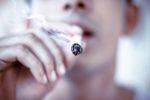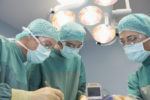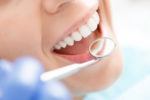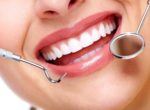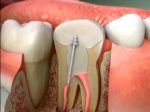Table of Contents
Diving with oxygen bottles, so called SCUBA diving (self-contained underwater breathing apparatus), is today’s very popular sport. Number of it’s fans from the mid-20th century is increasing each year. With this increasing number of fans its impact on overall health also expands, thus increasingly engage physicians, dentists, clinicians, and scientists who are involved in the field of sports medicine and study the physiology of scuba diving.
Although the technology that is used in scuba diving is nowadays much progressed and with the proper use is relatively safe, there are still certain risks to health to be taken into account. Proper identification of these risks can prevent and/or reduce the adverse consequences for human life and health. Therefore, training in basic physiology of diving and security is very important for both fans of the sport and for physicians and dentists. Medical conditions and disorders that are associated with scuba diving, which dentists may encounter in their patients, include headache, barosinusitis, barotitis-media, neuropathy of tripartite nerve (trigeminal nerve), facial nerve (facial nerve) neuropathy, baroparesis, dental barotrauma, barodontalgia, herpes infection, heightened gag reflex and temporomandibular joint dysfunction.
The exact epidemiological data on oral health disorders among divers, especially professional ones, unfortunately do not exist since many cases go unreported. Professional divers are often not inclined to report oral and other medical problems from fear of losing a diving license.
Head and facial barotrauma
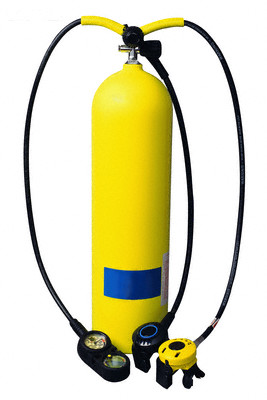
According to Boyle-Mariotte’s law the volume of gas at a constant temperature depends on the ambient pressure. Changes in volume of gas within the body cavity, associated with a change in water pressure, can cause unwanted side effects called barotrauma. Barotrauma can occur during diving, flying or oxygen therapy in hyperbaric chambers. Barotrauma in head and face regions include barotitis-media, barosinusitis, headache caused by barotrauma, dental barotrauma and barodontalgia.
Barotitis-media
Barotitis-media, or middle ear barotrauma, is an acute or chronic traumatic inflammation of the middle ear caused by the difference in pressures between the middle ear cavity (tympanic cavity) and the surrounding atmosphere. Symptoms of middle ear barotrauma may vary from mild uneasiness in the ear canal to intense earache, buzzing in the ear, dizziness, nausea and hearing loss. This disorder is usually one-sided and appears during or shortly after a dive.
Already existing inflammation of the upper respiratory system may prevent equalization of pressure through the Eustachian tube (a channel which connects the middle ear and throat) which predispose to the occurrence of barotrauma, and therefore may be a temporary contraindication for diving. Potential complications of middle ear barotrauma is a paralysis of the facial nerve (facial baroparesis) which can be caused by increased pressure in the middle ear. The paralysis of the facial nerve can affect the mobility of mimic muscles and the sense of taste in the front of the tongue.
There are number of cases described where the interference in Eustachian tube and middle ear ventilation were associated with teeth malocclusion (orthodontic anomalies). Correcting of this malocclusion would bring ventilation of the middle ear to the normalization and would prevent health problems after diving. Pain that occurs in the case of middle ear barotrauma can be transferred to the area of the oral cavity (indirect barodontalgia) and may erroneously be recognized as a toothache, especially of the upper teeth. This should be taken into account when it comes to patients who have recently dived.
Barosinusitis
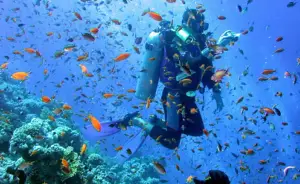 Barosinusitis (sinus barotrauma) is an acute or chronic inflammation of one or more of the paranasal sinuses that occurs due to the difference in pressure (usually negative) between the sinuses and the surrounding atmosphere. The difference in pressure creates a vacuum which can cause edema of the nasal mucous membranes, increased secretion of saliva from the nose and even submucosal hematoma. All this may be accompanied with pain of varying intensity and bleeding from the nose. Sometimes branches of the tripartite sinus nerve in the upper jaw can be temporarily paralyzed. Sinus barotrauma is more frequent during immersion than during emergence. Pain caused by barosinusitis should be distinguished from orofacial pain caused by other cause.
Barosinusitis (sinus barotrauma) is an acute or chronic inflammation of one or more of the paranasal sinuses that occurs due to the difference in pressure (usually negative) between the sinuses and the surrounding atmosphere. The difference in pressure creates a vacuum which can cause edema of the nasal mucous membranes, increased secretion of saliva from the nose and even submucosal hematoma. All this may be accompanied with pain of varying intensity and bleeding from the nose. Sometimes branches of the tripartite sinus nerve in the upper jaw can be temporarily paralyzed. Sinus barotrauma is more frequent during immersion than during emergence. Pain caused by barosinusitis should be distinguished from orofacial pain caused by other cause.
Headache caused by barotrauma
Headache caused by barotrauma is the headache that occurs during immersion or emergence, and usually lasts 15-20 minutes. It can be one-sided or two-sided, and given the characteristics of the pain many of them are described as migraine, with whom they are often incorrectly replaced during diagnosis.
Dental barotrauma
 Dental barotrauma can be defined as tooth fracture (Greek: odontos crexis) and fracture or loosening of dental filling caused by frequent changes of pressure. Separate parts of teeth or fillings will not only cause pain of various intensities, but can be a great danger when diving because they can be inhaled or ingested. Therefore, in such situations, the best solution is to temporary stop diving.
Dental barotrauma can be defined as tooth fracture (Greek: odontos crexis) and fracture or loosening of dental filling caused by frequent changes of pressure. Separate parts of teeth or fillings will not only cause pain of various intensities, but can be a great danger when diving because they can be inhaled or ingested. Therefore, in such situations, the best solution is to temporary stop diving.
Scientific research has shown that in professional scuba divers, who annually spend more than 200 hours under water, there is an increased risk of dental barotrauma and that their dental fillings and prosthetic replacements have significantly shorter life. As the main causes are cited frequent changes in pressure that occur when diving.
Predisposing factors for the occurrence of dental barotrauma are bigger cracks or hairline cracks on existing fillings, and concealed and/or secondary caries lesions on teeth. In addition, frequent changes in pressure in the microscopic air bubbles in the cement, that was used to cement dental crowns and bridges, can lead to the loss of retention of these prosthetic substitutes, which could result in their loosening and falling out. To this situation are particularly exposed prosthetic restorations cemented with zinc phosphate cement.
Therefore, all divers, and especially professionals, should always have repaired teeth without caries and bad or worn out fillings. Professional divers should alert the dentist about their occupation, especially when cementing crowns and bridges so the dentist can choose the appropriate cement in which the porosity occurs in the smallest percentage. Scuba diving with temporary fillings or temporarily cemented crown and bridge is not recommended because there is a high risk of their unwanted falling out, and thus other unintended consequences.
In edentulous (toothless) divers installation of dental implants has priority over making conventional dentures. Although rare, sometimes for toothless patients dentist can make individual diving inserts for the mouth that are in their form and function complementary with dentures.
Barodontalgia
Barodontalgia is the intraoral pain caused by changes in atmospheric pressure. Barodontalgia occurs in scuba diving, flying and other situations where there is a significant change in pressure. According to literature data, it occurs in 10 to 20 percent of the divers. The cases are described in which the severe pain caused by barodontalgia leads to dizziness and temporary disability, which may endanger the safety of divers.
Although barodontalgia is more a symptom than a real pathological condition, it’s background almost always conceals some existing subclinical condition or disease of the mouth and teeth. The most common are concealed and/or secondary caries and dilapidated dental fillings. Sometimes the cause may be necrotic pulp, chronic pulpitis and inflammation in the periapical area which may have clinical symptoms. Postoperative barodontalgia may appear immediately after dental procedures. It also can occur as a result of barotrauma caused by diving.
Barodontalgia can be direct (the pain is related to the tooth or teeth) or indirect (the source of pain is not related to the teeth).
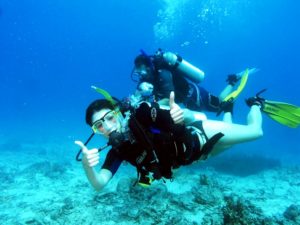 Barodontalgia can occur at a depth of 10 meters, although most often occurs at a depth of 18 meters and more. In contrast to aeroplane flight where the upper and lower teeth can be affected with barodontalgia equally, diving barodontalgia is more common in the upper teeth and during immersion, which is explained by the influence of sinus of the upper jaw.
Barodontalgia can occur at a depth of 10 meters, although most often occurs at a depth of 18 meters and more. In contrast to aeroplane flight where the upper and lower teeth can be affected with barodontalgia equally, diving barodontalgia is more common in the upper teeth and during immersion, which is explained by the influence of sinus of the upper jaw.
To prevent barodontalgia in divers periodic dental examinations should include recording and analysis of X-rays of the jaw. They also should include testing the vitality of teeth. In these inspections, special attention should be focused to pathological changes in the periapical areas, poor and worn fillings and secondary caries lesions. Setting the protective lining in the cavity when making fillings can reduce the incidence of barodontalgia. As with barotrauma, diving with temporary fillings is not desirable. In repeated endodontic procedures, when patients dive between visits and root canal is not filled, diving may cause subcutaneous emphysema as well as the penetration of infected intracanal content in the apical tissues.
The temporary ban on scuba diving after dental or oral surgery is the best way to prevent the occurrence of barodontalgia. It is recommended to avoid diving 24 hours after dental procedures (eg. tooth fillings, crowns and bridges), a week after oral surgery (including tooth extraction) and at least two weeks if there is suspicion of oroantral communication.
Conditions associated with diving mouthpiece
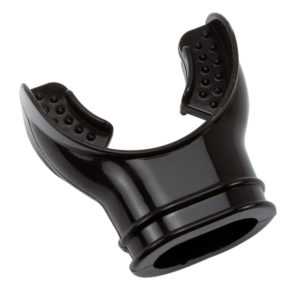 When scuba diving, divers in the mouth posture mouthpiece with the controller (regulator mouthpiece) that allows them to breathe underwater by bringing oxygen. The mouthpiece is usually made of silicone or soft acrylic resins, and considering the method of preparation can be commercial, semi individual and individual. During scuba diving divers hold mouthpiece firmly between the teeth of the upper and lower jaw, usually between canines and premolars. Therefore, total or partial tooth loss may be a contraindication for this type of diving, and too much compression of mouthpiece can cause damage to the hard dental tissues.
When scuba diving, divers in the mouth posture mouthpiece with the controller (regulator mouthpiece) that allows them to breathe underwater by bringing oxygen. The mouthpiece is usually made of silicone or soft acrylic resins, and considering the method of preparation can be commercial, semi individual and individual. During scuba diving divers hold mouthpiece firmly between the teeth of the upper and lower jaw, usually between canines and premolars. Therefore, total or partial tooth loss may be a contraindication for this type of diving, and too much compression of mouthpiece can cause damage to the hard dental tissues.
The air that comes through the mouthpiece from the air tank may in presence of oral surgery wounds cause intraoral pain similar to that which occurs in barodontalgia. Therefore, the recommendation is to avoid diving at least one week after the oral surgery to let the wound heals properly. It is also desirable that the dentist examines the wound before diving. In addition, such air coming under pressure can further shorten the lifespan of worn-out fillings.
It is believed that mouthpieces may cause herpes simplex virus infection, especially during their frequent changes among underwater divers. Therefore, it is recommended that everyone uses his own mouthpiece and perform its regular cleaning. Divers need to inform their dentist of any changes in the gums in order to recognize the symptoms of herpetic gingivostomatitis (herpes simplex virus infection) in time.
Although this issue is still a cause of many discussions, it is considered that diving mouthpiece can disrupt the functioning of the temporomandibular joint in divers, especially women. Studies have shown that from 24 to 68 percent of divers feel more or less interferences in the joint that may vary from joint clicking to severe pain. In comparison to the general population in which this joint disturbances occur in approximately 25 percent of cases. Sometimes, with these types of disorders, the name diving mouth syndrome is used which includes symptoms that occur in the temporomandibular joint such as muscle pain, joint pain, painful disc displacement and headaches. The intensity of these symptoms can be different, and can only be shown during the dive, but also can become a long-term and chronic. Temporomandibular joint disorders caused by diving should be diagnostically distinguished from barotrauma of the middle ear. One possible cause of these disorders is protruded position of the lower jaw and enhanced bite force in order to maintain mouthpiece in the position. In order to reduce muscle tension and avoid interference with temporomandibular joint, the use of semi individual or individual mouthpieces which cause smaller fatigue of masticatory muscles. Also the position of the lower jaw is similar to normal when there is no mouthpiece in the mouth.
Conclusion
Scuba diving is sport that is gaining more and more fans. The increased number of fans oblige both dentists and patients to take more care of the impact of this sport on oral health. This impact is multifaceted and can be manifested as dental barotrauma, barodontalgia and diving mouth syndrome with disabilities in the temporomandibular joint. Applying appropriate preventive measures, many of these disorders can be prevented and/or mitigated. Divers should be aware that predisposing factors for the occurrence of dental barotrauma are bigger or hairline cracks on existing fillings and concealed and/or secondary caries lesions.
